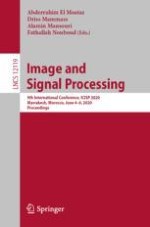This volume constitutes the refereed proceedings of the 9th International Conference on Image and Signal Processing, ICISP 2020, which was due to be held in Marrakesh, Morocco, in June 2020. The conference was cancelled due to the COVID-19 pandemic.
The 40 revised full papers were carefully reviewed and selected from 84 submissions. The contributions presented in this volume were organized in the following topical sections: digital cultural heritage & color and spectral imaging; data and image processing for precision agriculture; machine learning application and innovation; biomedical imaging; deep learning and applications; pattern recognition; segmentation and retrieval; mathematical imaging & signal processing.
